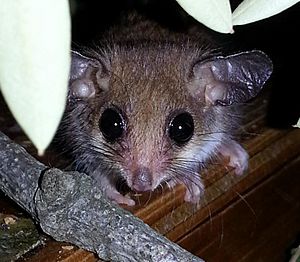Eyre Bird Observatory facts for kids
Quick facts for kids Eyre Bird Observatory |
|
|---|---|
| General information | |
| Type | Heritage listed building |
| Location | Great Australian Bight, Western Australia |
| Coordinates | 32°14′47″S 126°18′06″E / 32.24639°S 126.30167°E |
| Type | State Registered Place |
| Designated | 28 November 2003 |
| Reference no. | 16522 |

The Eyre Bird Observatory is a special place in Western Australia. It is used for learning, science, and fun activities. It helps people study and enjoy the many birds in the area.
This observatory is located in the Nuytsland Nature Reserve. The closest town is Cocklebiddy, about 49 km (30 mi) north. It sits between the huge Nullarbor Plain and the Great Australian Bight. This makes it one of the most remote places in Australia.
The observatory was started in 1977. It was set up by Birds Australia. It was Australia's very first bird observatory.
Did you know? Western Australia's coldest temperature ever was recorded here! It was −7.2 °C (19.0 °F) on August 17, 2008.
Contents
A Look at the Past: How Eyre Bird Observatory Began
Edward John Eyre's Journey
In 1841, a 26-year-old explorer named Edward John Eyre went on a long journey. He traveled almost 2,000 miles (3,200 km) from Adelaide to Albany. His group included his friend John Baxter and three Aboriginal men.
During their tough trip, they found fresh water. It was just 2 meters (6.6 ft) under a sand dune near the coast. They were very tired and thirsty. So, they camped there for a whole month to get better. This spot became known as Eyre's Sand Patch.
The Telegraph Station Era
Later, in 1877, the Inter-Colonial Telegraph Line reached Eyre's Sand Patch. A building was put up to house a telegraph repeater station. This station helped send messages across long distances. It was made of wood and corrugated iron. This place was then called the Eyre Telegraph Station.
About 20 years later, in 1897, the station moved. A new building was built nearby. It was made of limestone and corrugated iron. The telegraph station stayed there until 1927.
At that time, the telegraph line moved. It went about 150 km (93 mi) north to follow the Trans-Australian Railway. The old limestone building was then left empty.
From Abandoned Building to Bird Observatory
Fifty years after it was abandoned, in 1977, the limestone building got a new life. Volunteers worked hard to fix it up. They got help from the Post Office Historical Society and Birds Australia. Materials were provided by the WA Department of Fisheries and Wildlife.
Today, this restored building is the Eyre Bird Observatory. It is a permanent base for studying birds. Volunteers help keep the building running. Two caretakers even live on site for three months at a time!
Amazing Bird Life at Eyre
Birds of the Mallee Woodlands
The area around Eyre Bird Observatory is home to many birds. Honeyeaters usually spend their summers in Australia's deep south-west. But in winter, they travel north and east. They come to Eyre to eat nectar from the flowering mallee plants.
You can find honeyeaters, silvereyes, and other bird species here in winter. They live in the narrow coastal mallee strip. This area provides them with food and shelter.
Penguins and Other Species
West of Eyre, at Twilight Cove, there is a special breeding colony. It is home to little penguins. These small penguins spend their summers there.
By 2008, scientists had recorded 245 different bird species. All these birds live in the nature reserve around the observatory. It's a true paradise for birdwatchers!
See also
 In Spanish: Observatorio de Aves Eyre para niños
In Spanish: Observatorio de Aves Eyre para niños

